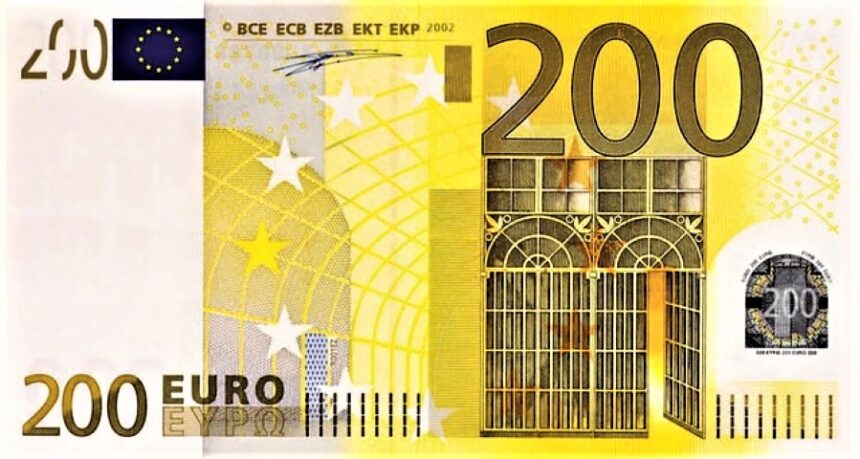EURUSD has stayed afloat due to sharp declines in US labor and manufacturing data, which dramatically shifted Fed expectations. The disappointing NFP report last Friday served as a trigger for a relief rally in the pair, with markets no longer pricing the Fed as “higher for longer,” but instead expecting a policy pivot as early as September.
Although Eurozone investor sentiment worsened in August, I’ve learned over the past three years of observing this pair that relative macro weakness matters less than perceived policy divergence. When the Fed softens while the ECB remains steady, EURUSD can rise even if both regions are weak. Traders chase interest rate differentials, not just economic health.
What Did the US Jobs Data Reveal About Economic Momentum?
The July NFP data showed a net addition of only 73,000 jobs versus the expected 110,000, while May and June were revised down by over 250,000 combined. This type of downward revision often signals the labor market is under more stress than it initially appears.
From experience, such sharp revisions tend to precede broader macroeconomic slowdowns. When I saw similar revisions in late 2022, the market reaction was the same Dollar weakness and rapid repricing of Fed expectations.
Here’s how July’s data played out:
July NFP: +73,000
June revised to: 14,000 (from 147,000)
May revised to: 19,000 (from 144,000)
Unemployment: Rose to 4.2% from 4.1%
These data points immediately impacted the futures market, where rate cut odds for September jumped to 80%—double what they were the day before the release.
How Did Trump’s Response Disrupt Market Sentiment?
The political response was just as impactful as the data. President Trump’s dismissal of the BLS commissioner and public accusation of “rigging” the numbers undermined trust in official US economic reporting. This came alongside Fed Governor Kugler’s resignation, giving Trump the opportunity to appoint a more dovish voice aligned with his policy goals.
This dual development is alarming to seasoned observers. In my view, central bank independence is a key pillar of currency strength, especially for the US Dollar. When political pressure mounts, it introduces volatility and uncertainty—both of which erode investor confidence in the Dollar’s stability.
As someone who closely tracks the Fed narrative, I believe this political interference is one of the most underappreciated bearish themes for the USD in the coming weeks.
Are Fed Rate Cuts Now a Near Certainty?
Traders believe so. The combination of labor market weakness and manufacturing contraction is shifting the policy narrative toward easing.
US ISM Manufacturing PMI fell to 48.0 in July (vs. 49.5 expected), deepening contraction territory.
Factory Orders are projected to decline by 5.2% in June, signaling shrinking demand.
Fed Funds Futures (CME Tool) show two cuts priced in by year-end.
While Fed officials like Raphael Bostic remain cautious, my view grounded in market behavior over the past few years—is that Fed forward guidance tends to lag the market, especially during rapid data shifts. If inflation trends don’t worsen, we are likely to see a cut in September, followed by another in Q4.
How Is the Eurozone Outlook Shaping EURUSD?
While the US Dollar weakness is propping up EURUSD, the Euro’s own foundation is far from solid. The Eurozone Sentix Investor Confidence Index dropped to -3.7, well below the expected +8.0, highlighting that optimism is fading quickly.
From a macro-structural view, the Euro still lacks strong growth drivers, and sentiment indicators reflect that. However, the yield differential story is now tilting in favor of the Euro, with the Fed set to cut while the ECB holds. That’s what keeps EURUSD climbing, even when Eurozone data is underwhelming.
Over the past three years, I’ve seen how EURUSD often behaves like a relative risk barometer. It’s not about strength in absolute terms but who’s less weak and more dovish.
What Are the Next Technical and Fundamental Drivers for EURUSD?
Factor Supports EURUSD Risks EURUSD Downside
Fed Expectations September cut odds > 70% Hawkish Fed tone, inflation surprises
Eurozone Confidence Already priced in weakness Further deterioration
Technical Resistance 1.1600 remains key hurdle Failure to break may cap gains
Short-Term Support 1.1550 psychological floor Break below targets 1.1400 lows
As of now, 1.1600 is a key resistance zone, previously a support-turned-ceiling. A sustained break above that level would signal continuation. On the downside, 1.1500–1.1400 remains a must-hold area to maintain bullish momentum.
How Should Traders Position for the Near Term?
Based on the current environment, I see merit in maintaining a moderately bullish EURUSD bias—especially while the pair trades above 1.1550.
Here are a few tactical suggestions:
Long EURUSD above 1.1550, targeting 1.1600–1.1650.
Set stops just under 1.1500 to avoid deeper downside traps.
Watch Fed speaker commentary especially any shift in tone after the NFP shock.
Keep an eye on Eurozone data to gauge whether the ECB will eventually follow the Fed with easing moves.
My personal approach during such macro-driven phases is to stay data-reactive, not headline-chasing. Let the Fed’s next signal guide conviction. Until then, I expect EURUSD to range with a bullish tilt.
Conclusion : A Dollar on the Back Foot, But Not Out
EURUSD is rising not because the Euro is strong but because the Dollar is vulnerable. Weak jobs, political interference, and a probable policy pivot by the Fed are all tilting the scale.
However, this strength is built on shaky ground. The Eurozone economy has its own troubles, and the rally may lose steam if the ECB shifts dovish or US data unexpectedly rebounds.
In my experience, markets tend to overshoot policy pivot themes before reality settles in. For now, EURUSD looks poised to test higher levels but it’s not a one-way trade.
Disclaimer: This blog is for informational purposes only and does not constitute financial advice. Always conduct your own research and consult a professional advisor before making investment decisions.
[sc_fs_multi_faq headline-0=”h2″ question-0=”Why is the EUR/USD rising despite weak Eurozone data?” answer-0=”The EUR/USD is climbing mainly due to weaker US economic indicators and rising expectations of Federal Reserve rate cuts. While Eurozone data remains soft, the relative dovish shift in US monetary policy supports the Euro in the near term. ” image-0=”” headline-1=”h2″ question-1=”What impact did the US jobs report have on Fed expectations?” answer-1=”July’s Nonfarm Payrolls came in far below expectations, with downward revisions for May and June. This pushed rate cut odds for September above 70%, weakening the US Dollar and lifting EUR/USD.” image-1=”” headline-2=”h2″ question-2=”How is Trump influencing the Fed and market sentiment?” answer-2=”Trump’s dismissal of the BLS commissioner and his upcoming Fed appointment after Kugler’s resignation are fueling fears of reduced central bank independence, undermining market confidence in US economic governance. ” image-2=”” count=”3″ html=”true” css_class=””]









